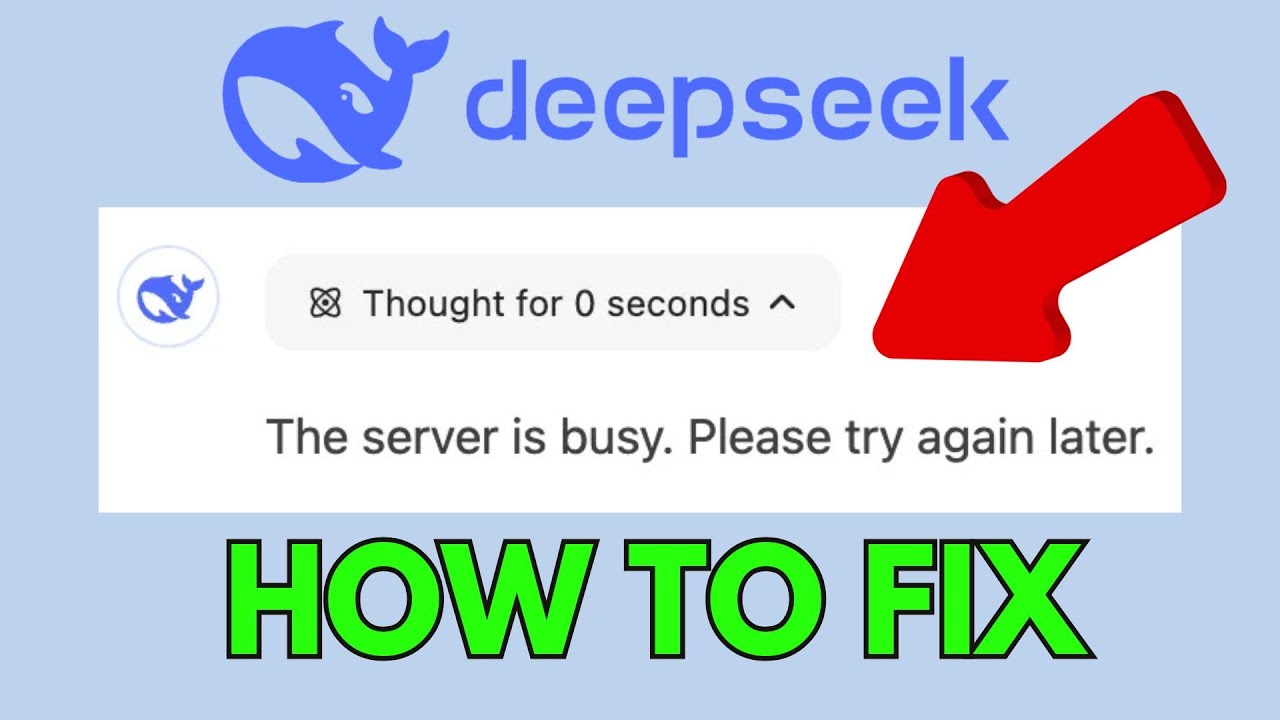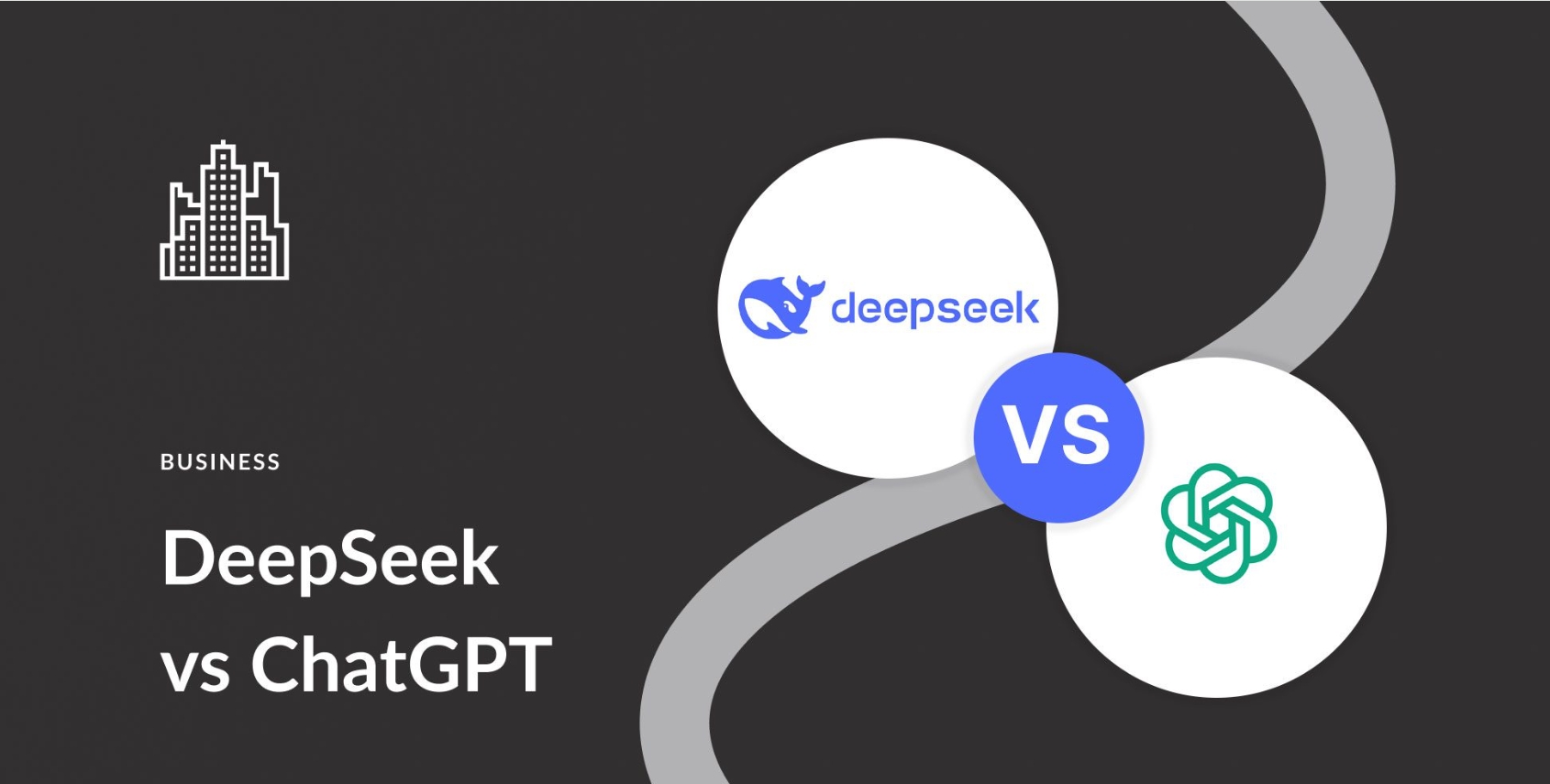Why Is DeepSeek Always Busy? Causes and Solutions for Uninterrupted AI Access
DeepSeek, a powerful AI model renowned for its mathematical reasoning, programming assistance, and logical problem-solving, has gained widespread adoption. However, many users frequently encounter the "server is busy, please try again later" message, making it difficult to access the model when needed.
This article will explore the key reasons why DeepSeek is always busy, along with effective solutions to improve access, including an in-depth guide on how to deploy DeepSeek locally to bypass server overload issues entirely.

Part 1: Why Is DeepSeek Always Busy?
1. High User Demand Overloading Servers
One of the primary reasons for DeepSeek’s busy servers is its growing popularity. As more users attempt to access the AI model simultaneously, the platform's infrastructure may struggle to accommodate the volume of requests.
Impact of High Demand:
- Peak Hours Lead to Slow Responses – During working hours and evenings, when many users log in, server response times may slow down or fail entirely.
- Limited Concurrent Sessions – DeepSeek likely has a cap on how many active queries it can handle at once, leading to the "server busy" error when the limit is reached.
Solution: Try accessing DeepSeek during off-peak hours (e.g., early morning or late at night) to increase the chances of a successful connection.
2. Server Infrastructure Limitations
DeepSeek operates on high-performance cloud-based servers, but if these servers are not optimized or scaled efficiently, they can struggle under heavy loads.
Why This Happens:
- Resource Allocation Issues – AI models require GPU-intensive computations, and an overload of requests can drain available resources.
- Scaling Challenges – As DeepSeek grows, its servers need to scale accordingly, but there might be delays in infrastructure upgrades.
Solution: Stay informed by checking DeepSeek’s official status page or community forums for any announcements about server maintenance or capacity upgrades.
3. The Resource-Intensive Nature of DeepSeek
DeepSeek is an AI model with 67 billion parameters (DeepSeek Coder) and relies on advanced Mixture-of-Experts (MoE) techniques to optimize computations. This allows DeepSeek to allocate computing resources dynamically, but it still requires substantial GPU power, especially during high-traffic periods.
How This Affects Performance:
- Heavy Computational Demand – Complex queries (e.g., coding assistance, advanced reasoning tasks) require more processing time, increasing the likelihood of server overload.
- Processing Delays – If a large number of users submit high-complexity queries simultaneously, response times will suffer.
Solution: Try submitting simpler queries first before moving on to more complex tasks, as simpler inputs may have a higher chance of getting processed faster.
4. DDoS Attacks and Cybersecurity Threats
Recent reports indicate that DeepSeek has been targeted by Distributed Denial of Service (DDoS) attacks, where malicious actors flood the servers with excessive requests, preventing legitimate users from accessing the service.
How DDoS Attacks Impact DeepSeek:
- Fake Traffic Overload – Servers get overwhelmed, preventing real users from connecting.
- Temporary Lockdowns – DeepSeek’s security team may impose temporary rate limits or access restrictions to mitigate attacks.
Solution: If you suspect an ongoing attack, wait for official updates from DeepSeek’s developers regarding restoration of service.
5. Ongoing Maintenance and Upgrades
DeepSeek is still evolving, and its developers regularly perform maintenance to improve model efficiency, fix bugs, and scale infrastructure. During maintenance, server access may be restricted or slow.
Why Maintenance Causes Downtime:
- Model Optimization Efforts – Adjustments to the AI model itself can require temporary service interruptions.
- Hardware Scaling – Upgrading cloud servers to handle more users can lead to scheduled downtimes.
Solution: Follow DeepSeek’s official channels for scheduled maintenance notifications and try accessing the service once maintenance is complete.
Part 2: Solutions to Fix the "DeepSeek Server is Busy" Issue
If you frequently encounter the "server is busy" error, here are the best ways to regain access and improve performance:
1. Try Accessing DeepSeek During Off-Peak Hours
As mentioned earlier, avoiding peak usage times (e.g., mid-day and evenings) can significantly increase your chances of connecting successfully.
- Best times to access DeepSeek: Early morning (before 8 AM) or late at night (after 11 PM).
- Worst times: Weekday afternoons and evenings when the user base is most active.
2. Clear Browser Cache and Cookies
Sometimes, a corrupt browser cache can interfere with loading DeepSeek properly.
How to Fix It:
- Open your browser settings.
- Navigate to Privacy > Clear Browsing Data.
- Select Cache and Cookies and confirm the deletion.
- Restart your browser and try accessing DeepSeek again.
3. Use a Stable Internet Connection
A slow or unstable network can make DeepSeek appear unresponsive, even if the servers are not actually overloaded.
- Switch from Wi-Fi to Ethernet for a more stable connection.
- Avoid using a VPN that could slow down your connection to DeepSeek.
4. Deploy DeepSeek Locally to Avoid Server Issues
If you frequently rely on DeepSeek and want to avoid server issues altogether, consider deploying the model locally.
Advantages of Local Deployment:
✅ No server downtime – Run the AI model independently.
✅ Faster responses – No waiting in queues or dealing with slow server performance.
✅ Privacy protection – Your data remains on your local machine.
How to Deploy DeepSeek Locally:
- Check Your System Requirements – Ensure you have a dedicated GPU (e.g., NVIDIA RTX 3090 or better) and at least 32GB of RAM.
- Install Docker & Required Dependencies – Install Docker to manage AI model containers efficiently.
- Download DeepSeek Model – Obtain the latest DeepSeek model files from official repositories.
- Run the Model Locally – Use Open WebUI or compatible software to load the DeepSeek model for offline usage.
Note: Local deployment requires technical knowledge and powerful hardware to run effectively.
5. Use Alternative Platforms Supporting DeepSeek
If DeepSeek’s official servers are down, check if third-party AI platforms (e.g., Hugging Face, Open WebUI) offer DeepSeek-based models.
- Some research institutions and tech companies provide DeepSeek API access, which might be a good alternative.
- Check community forums and AI discussion groups for real-time server status updates.
Conclusion
The "DeepSeek server is busy" error is mainly caused by high user demand, limited server resources, and occasional cyberattacks. However, you can take practical steps to reduce service interruptions, such as:
- Using DeepSeek during off-peak hours
- Clearing cache and optimizing internet connectivity
- Deploying DeepSeek locally for full control
- Checking for maintenance updates and security alerts
For users who rely on DeepSeek frequently, local deployment is the best long-term solution, eliminating server dependency and ensuring uninterrupted AI performance.


 HitPaw Edimakor
HitPaw Edimakor HitPaw Univd (Video Converter)
HitPaw Univd (Video Converter)  HitPaw VikPea (Video Enhancer)
HitPaw VikPea (Video Enhancer)

Share this article:
Select the product rating:
Daniel Walker
Editor-in-Chief
My passion lies in bridging the gap between cutting-edge technology and everyday creativity. With years of hands-on experience, I create content that not only informs but inspires our audience to embrace digital tools confidently.
View all ArticlesLeave a Comment
Create your review for HitPaw articles